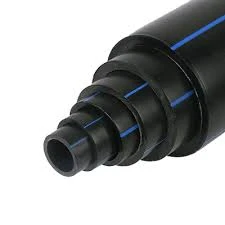Nov . 29, 2024 12:57 Back to list
High-Density Polyethylene Cutting Board Material for Durability and Safety in the Kitchen
The Benefits of HDPE Cutting Boards A Comprehensive Guide
When it comes to kitchen essentials, cutting boards are a must-have for any home cook or professional chef. Among the various materials available on the market, High-Density Polyethylene (HDPE) has emerged as a popular choice for cutting boards. This article delves into the advantages of HDPE cutting boards, their maintenance, and why they are a superior option for food preparation.
What is HDPE?
High-Density Polyethylene, or HDPE, is a thermoplastic polymer made from petroleum. It is known for its high strength-to-density ratio, making it a durable and versatile material. HDPE is commonly used in a range of products, from plastic bottles to piping. When it comes to cutting boards, its unique properties make it an ideal choice for culinary tasks.
Benefits of HDPE Cutting Boards
1. Durability One of the most significant advantages of HDPE cutting boards is their durability. They are resistant to scratches and dents, meaning they can withstand the rigors of daily food preparation. Unlike wooden boards, HDPE does not absorb moisture, making it less prone to warping and cracking over time.
2. Non-Toxic Safety is paramount in the kitchen, and HDPE is a non-toxic material. It is free from harmful chemicals such as BPA and phthalates, which can leach into food. This quality makes HDPE cutting boards an excellent choice for those concerned about food safety and health.
3. Easy to Clean Cleaning is a crucial aspect of maintaining a hygienic kitchen. HDPE cutting boards are dishwasher-safe, allowing for easy and thorough cleaning. High temperatures in the dishwasher can eliminate bacteria that may remain on other types of cutting boards, ensuring that your cutting surface is safe for food preparation.
4. Odor and Stain Resistance Unlike wooden or composite cutting boards, HDPE is resistant to stains and odors. While certain foods, such as beets or garlic, can leave lasting marks or smells on other cutting boards, HDPE remains relatively unaffected. This feature helps maintain the cutting board's aesthetic appeal and ensures that flavors do not transfer between different types of food.
hdpe cutting board material

5. Affordable Compared to other materials like bamboo or high-quality wood, HDPE cutting boards are often more budget-friendly. This affordability does not compromise on quality, making them accessible to a wider range of consumers.
6. Variety of Colors and Sizes HDPE cutting boards come in various colors and sizes to suit different culinary needs. Color-coded boards are particularly useful for preventing cross-contamination in the kitchen. For instance, using a specific color for raw meats and another for vegetables can help maintain food safety standards.
Maintenance Tips
To get the most out of your HDPE cutting board, consider the following maintenance tips
- Regular Cleaning After each use, wash the board with hot, soapy water. For deeper cleaning, a vinegar or baking soda solution can help remove tough stains and odors.
- Avoid Heat While HDPE is durable, it is essential to avoid exposing it to extreme heat, as this can warp the board. Use it only on a flat surface and away from direct heat sources.
- Cut Properly To preserve the surface of the board and prolong its life, use sharp knives and avoid cutting with excessive force. This practice keeps the board looking new and helps maintain its surface integrity.
Conclusion
In summary, HDPE cutting boards are an excellent choice for anyone looking to enhance their kitchen experience. Their durability, safety, ease of cleaning, and cost-effectiveness make them a smart investment for both amateur and professional cooks alike. With a little maintenance, an HDPE cutting board can serve you well for years to come, proving that a great cooking companion can also be a sustainable and responsible choice. Whether you’re dicing vegetables, slicing meats, or preparing a beautiful charcuterie board, an HDPE cutting board has got you covered.
-
High-Quality PPR Pipes and Fittings Durable ERA PPR & PVC PPR Solutions
NewsJul.08,2025
-
Black HDPE Cutting Board - Durable, Non-Porous & Food Safe HDPE Plastic Cutting Board
NewsJul.08,2025
-
High-Quality CPVC Panel Durable HDPE & PVC Panels Supplier
NewsJul.08,2025
-
Double PE Welding Rod Supplier - High Strength, Durable & Versatile Welding Solutions
NewsJul.07,2025
-
High-Quality PVC-O Pipe Supplier Durable 75mm PVC Pipe & Connections Leading PVC Pipe Company
NewsJul.07,2025
-
HDPE Drainage Pipe Supplier – Durable & Corrosion-Resistant Solutions
NewsJul.06,2025

